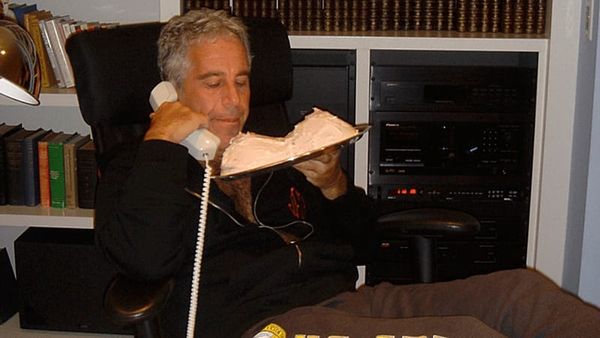
Okay, pretty much everyone knows how I feel about high-speed rail — even though I haven’t written about it for years (nearly five, to be exact).
I had a coffee a while back with a Liberal luminary who asked: “And do you still hate high-speed rail?” The answer is yes, in Australia. I’m as happy to take the TGV from Paris to Lyon as the next tourist, and while in China I travelled, and probably got COVID-19, on a packed seven-hour high-speed train from Beijing to Chongqing. Good stuff.
But here? We’re talking about our taxpayer dollars, and we need to get serious.
Although both sides of politics have long talked idly about high-speed rail and occasionally commissioned reports, we are cursed to have in Anthony Albanese a genuine enthusiast for a mode of travel wholly unsuited to Australia’s small population and vast distances. His ascension to the prime ministership has ushered in a dangerous period of actual wastage of taxpayer money on the idea — not just money on consultants and engineering reports from the usual suspects, but cold, hard cash.
The “High Speed Rail Authority” was established in June, replacing the “National Faster Rail Agency”. That’s $4-5 million a year for “advising on, planning, developing and overseeing the construction and operation of a transformational network along Australia’s eastern seaboard” — a network that won’t be built in the lifetime of anyone working in that agency. Labor also previously committed $500 million to “developing high-speed rail”. That’s not building anything — that’s just doing the business case and other paperwork.
Oh, and that’s not for a high-speed rail network on the eastern seaboard — that’s just for one branch of the network, from Newcastle to Sydney.
Yesterday Infrastructure Minister Catherine King announced the government was spending $79 million of that half a billion “to deliver the initial Sydney-to-Newcastle high-speed rail business case”.
Now kudos to the government for actually investing properly in doing an infrastructure business case, but it reflects just how absurdly expensive high-speed rail is that you spend half a billion without even buying the land on which you might eventually stick the line.
The reason the focus is on Newcastle to Sydney is not just because it’s an election commitment, but it’s also the only route that makes some sort of financial sense: despite being just 150-odd kilometres apart, the links between Newcastle and Sydney are rubbish (as anyone who has travelled on the Shitkansen, or been stranded in a kilometres-long jam on the M1, can attest). With more than 300,000 people and the potential for better transport links to bring Newcastle and the Central Coast into a more user-friendly commuter range of Sydney, even I’m prepared to admit a high-speed line between the two cities might work.
But poor topography and curvy terrain are the enemies of high-speed rail. It needs lots of flat land where you can build very long stretches of dead-straight track to hit 300km/h. Good luck finding that between Sydney and Newcastle.
When Labor was last in government and Albanese, then mere infrastructure minister, commissioned yet another look at high-speed rail, the consultants found that Newcastle-Sydney would generate far more trips than Sydney-Melbourne or Sydney-Brisbane, including five million commuter trips a year. But the cost was also far greater: per kilometre, Newcastle-Sydney would cost nearly three times as much as a Sydney-Melbourne route and about 76% more than Sydney-Canberra (if you’ve driven the Hume, you’ll know how flat and straight it is, even going through the Great Dividing Range).
That report recommended building Sydney-Melbourne first, then worrying about the line to Newcastle (and filling in from Newcastle to Brisbane and the Gold Coast after that).
Back then, the stab-in-the-dark/back-of-the-envelope/run-it-up-the-flagpole-and-see-who-salutes estimate of the cost was $10-18 billion. Since then, we’ve learnt the hard way that major infrastructure projects invariably blow out their costs by billions.
The other great rail boondoggle inflicted on us by the Nationals, the inland rail line intended to subsidise coal exports, has blown out from under $5 billion to $30 billion (appallingly, Labor has failed to take that project out and have it publicly executed, nor rip up whatever steel has been laid and flog it for scrap). That $18 billion would not only be closer to $25 billion in real terms now; it would be likely to be a third or a quarter of the final cost — if we’re lucky.
About the only sensible thing in the usual starry-eyed media coverage of King’s announcement yesterday was the Newcastle representative who urged governments to improve the existing Newcastle-Sydney rail link first.
Improving the reliability and performance of existing infrastructure is always a much better investment than building brand-spanking-new stuff. But it comes with little or none of the announceability of the latter for politicians and little interest for the media. That $500 million would be much better spent on making the Shitkansen a little less shit. And maybe we should reestablish a “faster rail” agency. That makes a lot more sense.
Disclosure: the author worked for several years in rail policy in the federal Transport Department in the 1990s. And you didn’t.







